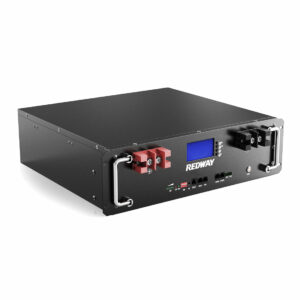What does a CMOS battery do in a server?
CMOS batteries in servers provide backup power to the motherboard’s CMOS chip, preserving critical BIOS/UEFI settings like system time, hardware configurations, and boot order during power loss. Typically using 3V lithium coin cells (e.g., CR2032), they prevent data reset and ensure seamless server reboots. Lifespan ranges 3–5 years; failure leads to incorrect clocks, boot errors, or hardware misdetection.
Why is the CMOS battery essential for server operations?
CMOS batteries maintain BIOS/UEFI non-volatile memory and real-time clock (RTC) functionality. Without them, servers lose boot priorities, RAID configurations, and time stamps, disrupting automated tasks and security protocols reliant on accurate timing.

Servers depend on persistent memory to retain hardware settings, even during outages. The CMOS battery’s 3V output powers the RTC and NVRAM (Non-Volatile RAM), which stores BIOS/UEFI parameters like CPU voltage, fan thresholds, and storage controller modes. For example, if a server loses power, a functional CMOS battery ensures it reboots using predefined RAID-10 settings instead of defaulting to riskier RAID-0. Pro Tip: Replace CMOS batteries proactively every 3 years—waiting for failure risks SSL/TLS certificate errors (which rely on accurate system time).
How does a CMOS battery differ from a server’s main power supply?
Unlike the primary PSU, which delivers 12V/5V/3.3V to active components, the CMOS battery provides low-power 3V backup solely to the CMOS chip. It operates independently, ensuring BIOS settings survive even during prolonged main power disconnection.
While server power supplies handle high-wattage loads (e.g., CPUs, GPUs), the CMOS battery focuses on micro-power retention. It draws ~20µA—so a standard 225mAh CR2032 lasts ~3 years. Think of it as a safety net: just as emergency lights activate during blackouts, the CMOS battery keeps the RTC ticking. Practically speaking, dual power supplies (PSUs) might keep servers online, but only the CMOS battery preserves firmware settings. For instance, blade servers in data centers use CMOS batteries to retain chassis slot IDs across maintenance cycles. Pro Tip: Pair redundant PSUs with healthy CMOS batteries for full fault tolerance.
| Feature | CMOS Battery | Main PSU |
|---|---|---|
| Voltage | 3V DC | 12V/5V/3.3V |
| Current Draw | ~20µA | 10–50A |
| Lifespan | 3–5 years | 5–10 years |
What happens when a CMOS battery fails in a server?
Failed CMOS batteries cause system time resets, BIOS configuration loss, and boot failures. Servers may default to generic hardware profiles, disabling overclocks, custom fan curves, or Secure Boot keys—exposing vulnerabilities.
When the CMOS battery dies, the RTC halts, resetting the system clock to a default date (e.g., January 1, 2000). This disrupts cron jobs, SSL handshakes, and audit logs. Imagine a bank’s transaction server timestamping transfers incorrectly—it could trigger compliance violations. Additionally, RAID controllers might revert to AHCI mode, making arrays unreadable. Pro Tip: Monitor BIOS events via IPMI; sudden “Configuration Reset” alerts often signal CMOS failure.
Can servers operate without a CMOS battery?
Servers can temporarily run without a CMOS battery but lose all BIOS customizations at shutdown. Default settings may compromise performance, security, or hardware compatibility—especially in RAID or NUMA-optimized systems.
Without a CMOS battery, servers boot using factory BIOS defaults. While this allows basic operation, critical optimizations vanish. For example, a hypervisor server might lose VT-d passthrough settings, crippling VM performance. Similarly, memory-intensive nodes could disable ECC checking, risking silent data corruption. However, in cloud environments, some settings are script-reconfigurable post-boot. But what if the server restarts unattended? Without a CMOS battery, automation fails. Pro Tip: For edge servers, always keep spare CR2032 batteries onsite—remote locations can’t afford BIOS resets.
| Scenario | With CMOS Battery | Without CMOS Battery |
|---|---|---|
| Post-Power Outage | Seamless reboot with saved settings | Manual BIOS reconfiguration needed |
| Hardware Upgrades | Retains boot order/RAID settings | Resets to default, risking array failure |
| Security | Maintains Secure Boot/TPM states | Disables security features by default |
How to diagnose and replace a failing CMOS battery?
Diagnose via BIOS time drift, POST errors, or IPMI logs. Replacement involves powering down, removing the old CR2032, and inserting a new one—ensuring polarity matches the motherboard’s holder.
Signs of failure include recurrent “CMOS Settings Wrong” messages or system clocks lagging by hours. For diagnosis, compare the server’s time against an NTP source; deviations >5 minutes/week indicate a weak battery. Physically, check for corrosion or voltage below 2.8V using a multimeter. Replacement is straightforward: after shutdown, ground yourself, pop the old battery out, and snap in a new one. But why risk electrostatic discharge? Use an anti-static wrist strap. For example, Dell PowerEdge servers have easily accessible battery slots near PCIe risers. Pro Tip: After replacement, reconfigure BIOS settings and document them in a firmware repository.
RackBattery Expert Insight
FAQs
How do I know if my server’s CMOS battery is dying?
Watch for system clock resets, BIOS error beeps during POST, or IPMI alerts like “Battery Low.” Regular voltage checks (below 2.8V) confirm degradation.
Can a dead CMOS battery cause data loss?
No—it only affects BIOS settings, not stored data. However, incorrect RAID/HBA configurations may make data inaccessible until BIOS is reconfigured.
Are CMOS batteries rechargeable in servers?
Most use non-rechargeable lithium (e.g., CR2032). Some legacy servers employ Ni-MH batteries, but these are rare post-2010. Check your motherboard specs before replacement.



